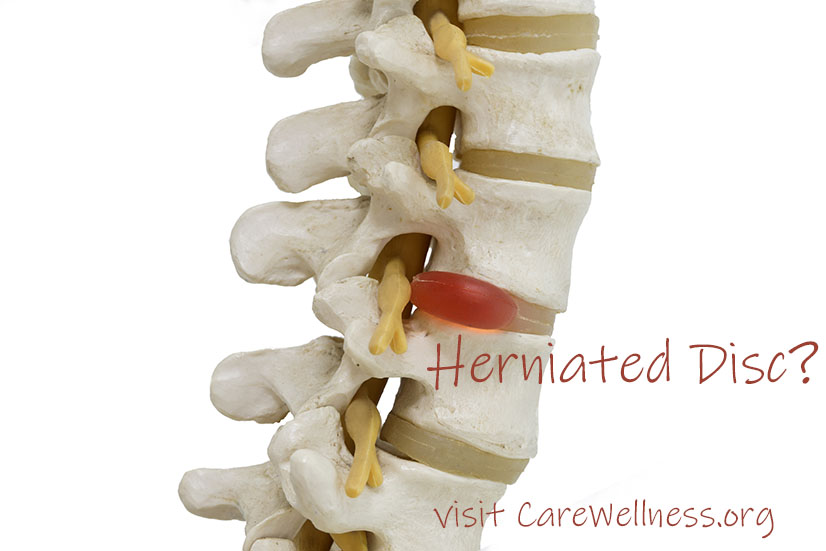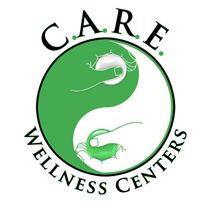Herniated Disc Treatment – By Dr. Adam J. Friedman – Margate / Coconut Creek, Florida
In this post, I’d like to give you information about a possible cause of your aching back, a “herniated disc”. I’ll review some herniated disc treatment options – and – most importantly – provide you with some guidance on how to prevent back pain.
MRI may show that you have what we refer to as a herniated disc. It helps if you think of the discs in your spine as individual jelly donuts, having a soft center surrounded by a tougher exterior. Sometimes called a slipped disc or a ruptured disc, a herniated disc is when some of the soft interior pushes out through the tougher exterior.
By definition, a herniated disc can irritate nearby nerves, resulting in back pain, numbness or weakness in your arms or legs. Remember, your spine supports your entire body and any malfunction of the spine can affect other body parts. Most often, chiropractors see herniated discs in the patients’ lower back (known as the lumbar spine); however, there are times when an MRI can show a herniated disc in your neck (known as the cervical spine).
Many of my patients cannot tell me the exact cause of their herniated disc; sometimes, simple acts such as using their back muscles instead of their leg and thigh muscles when lifting large, heavy objects or simply turning and/or twisting when lifting can cause a herniated disc. For many people, the problem starts off small and gradually builds until they actually feel the pain. A simple sneeze can cause you to feel a sudden, sharp pain in your back.
In most cases, patients usually have a herniated disc which was dormant, and a simple sneeze can trigger their pain. That pain progresses into the leg. Sports activities – and related sports mishaps – along with other physical trauma, such as a fall or car accident, can also cause a herniated disc.
There are several factors that increase an individual’s risk of a herniated disc. Carrying excess body weight puts extra stress on the discs in the lower back. People with physically demanding jobs have a greater risk of back problems.
Repetitive lifting, pushing, pulling, bending sideways and twisting can increase ones’ risk of back problems. Lastly, one cannot rule out genetics; some people simply inherit a predisposition to develop herniated discs.
Disc herniation is also a result of gradual, age-related wear and tear. As one ages, the spinal discs lose some of their water content – that soft center of our previous metaphor of a jelly donut. This makes the discs less flexible and more prone to tearing or rupturing with a minor strain or twist.
Chiropractic care in the treatment of herniated discs
Chiropractors evaluate the entire spine. Even if my patient complains of only lower back pain, I will examine their neck as well. I want to see how their spine is functioning overall. Remember: what happens in one area of the spine can influence other parts of your spine and/or body.
It goes without saying that the type of disc injury you have will determine the type of chiropractic care I will recommend.
Chiropractic care is a safe and effective way to treat herniated discs. To treat a herniated disc, your treatment plan may include spinal manipulation —also known as adjustments—and other chiropractic techniques to help ease your herniated disc symptoms.
“Flexion distraction” is a common chiropractic adjustment used to stretch the spine and isolate the affected area while flexing the spine with a gentle pumping rhythm. This will be an individualized treatment plan, but it may include manual therapy and therapeutic exercises.
The details of what will be in your treatment plan are specific to your pain, your level of activity, your overall health, and what I think is best for you. As with any treatment option, I urge you not to hesitate to ask me any questions about what chiropractic treatments are being recommended and why.
I want to be sure that you understand what will be done and how it can help relieve your pain. It’s important to me that I know what you expect from – and what I expect from you.
Chiropractic treatments provide drug-free pain relief. We all know that pain relief medication can be extremely addictive. Currently, you cannot read or view the news without hearing about another, terribly sad death due to either over-dosage or complications caused by most recognized pharmaceuticals.
Chiropractic treatments offer relief from pain without the need for any addictive drugs or medications; adjustments relieve pressure on the nervous system and encourages the release of the body’s own anti-inflammatory substance, which reduces inflammation thereby reducing pain. Chiropractic medicine encourages the body to heal from within.

So – what can you do to keep your back healthy?
As it turns out, there is a great deal an individual can do to prevent herniated disk pain.
First of all, it’s important to let your spine really rest when you are sleeping. When an individual lies down, the discs in their back have an opportunity to rest. I always tell patients that they should choose a mattress and pillow based on personal preference and keyed to their individual back pain.
With so many types of mattresses and pillows available, it’s important to seek out the best mattress/pillow match for you; remember – a good night’s sleep benefits the entire body as well as influencing the next days’ events.
Second, it is essential for you to strengthen your “core” muscles. Your “core” consists of your lower back and abdominal muscles. Many of us lead sedentary lifestyles where we are either sitting behind a desk or sitting at a computer. I can show simple and easy stretches and exercises that can be completed in 20 to 30 minutes and readily become part of your daily routine.
Third, check out your shoes. Most people do not realize the effects poor fitting shoes can have for their back. Whether you are walking as part of your exercise routine or checking your steps off on your smart watch, you need to know that the shoes you wear play an important role in supporting your lower back.
A good fit ensures that the heel area of the shoe fits snugly but is not too tight. How your heel is supported can prevent over-pronation or supination – otherwise known as rolling of the foot from one side to the other.
Fourth, limit your total sitting time and check out your workstation. It has been said that “sitting is the new smoking” and I totally agree. When you are sitting, the discs in your lower spine are enduring three times the stress than they experience when you are standing. Sitting for long period of time – and I would suggest “standing” breaks at least every thirty to forty minutes – can create or aggravate a herniated disc.
Additionally, those who sit at a desk or use a computer for long periods of time exhibit a natural tendency to slouch and lean forward – putting extra stress on the lumbar discs. When you stand, stretch out your back; if you need to talk on the telephone as part of your job, try standing and stepping in place, or if you can, pace around your office. The spine is meant to move; movement keeps it healthy by fueling the body with healthy nutrients.
Lastly, pay attention to early warning signs. It’s common to have back pain once in a while, but pay attention to what your body is telling you. Left untreated, problems can become worse. Taking care of your spine NOW definitely helps in lowering your chances of experiencing back pain later. I encourage you to remember the simple, easy things you can do for your back. Even the smallest change can help with your healing process over time.
Dr. Adam J. Friedman gets results with his treatment for herniated discs. He serves the communities of Coconut Creek, Margate and Coral Springs. Call him today to get started!
Resources:
